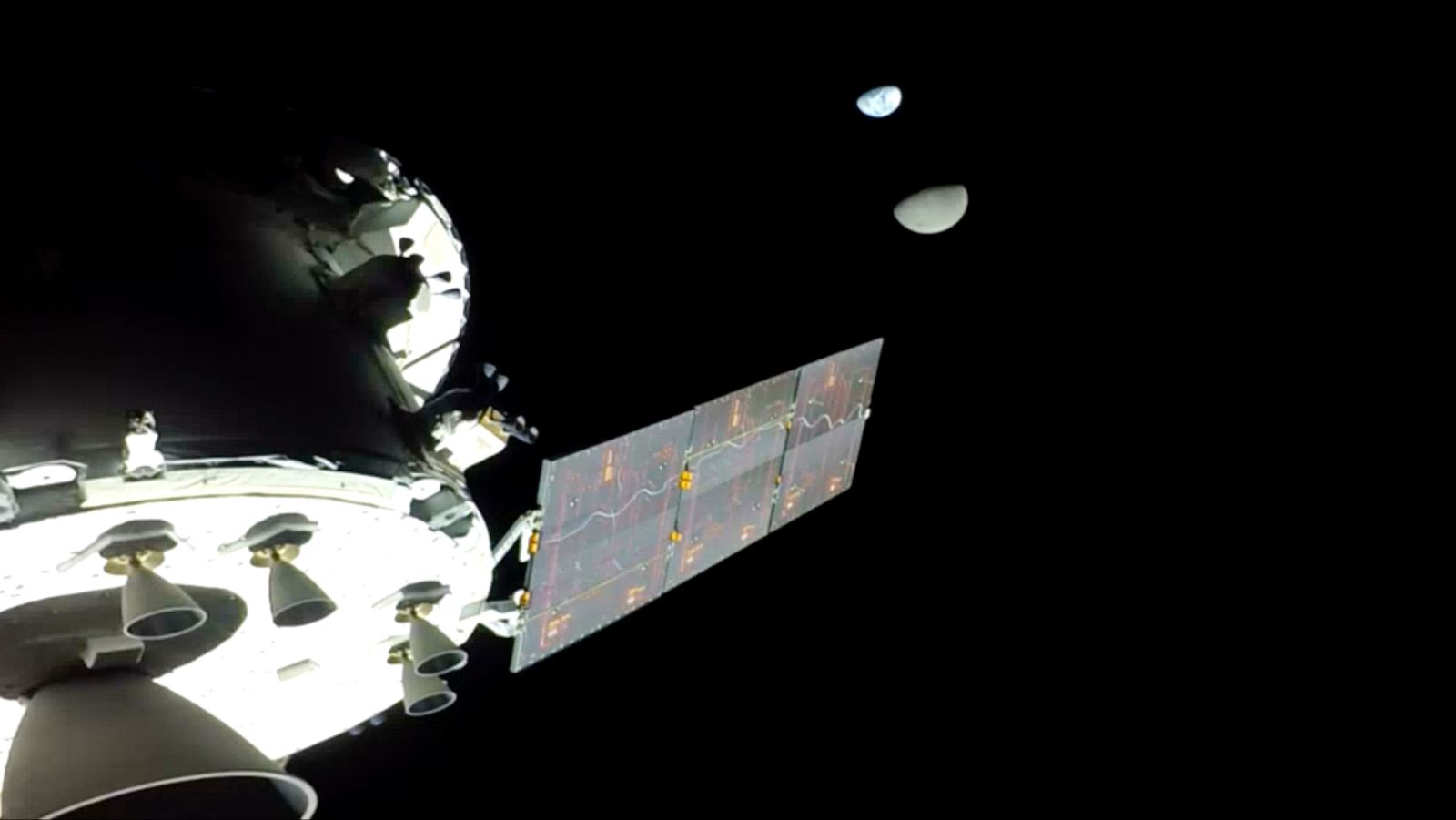Look at the amazing images of the Orion spacecraft, the Earth and the Moon 0:48
(CNN) --
The Orion spacecraft, which is the core of NASA's historic Artemis I mission, reached its farthest distance from Earth on Monday afternoon, breaking the record for the furthest distance a spacecraft has traveled. Spacecraft designed to transport humans.
The space agency confirmed Monday night that the Orion capsule had reached the halfway point of its unmanned mission around the Moon, some 434,523 kilometers from Earth.
That's more than 40,000 miles beyond the far side of the moon.
The previous record for the farthest a human-carrying spacecraft had traveled was set during the Apollo 13 mission in 1970. That mission, which actually had humans on board, came as far as 400,171 kilometers from our planet.
Why does the "astronaut dummy" that travels aboard the Artemis I have a Spanish name?
The goal of the Artemis I mission, which launched from the Kennedy Space Center in Florida on November 16, is to test the Orion capsule to its limits, ensuring the vehicle is ready to safely host humans.
The test is part of a larger NASA program called Artemis, which aims to return astronauts to the lunar surface for the first time since the 1970s.
There have been several hiccups, or "funnies" as Artemis I mission manager Michael Sarafin calls them, during this mission.
advertising
One problem was related to Orion's star tracker, a system that uses a map of the cosmos to tell engineers on Earth how the spacecraft is oriented.
Some data readouts weren't coming through as expected, but NASA officials chalked that up to a necessary learning curve in any new spacecraft operation.
Watch the Orion spacecraft from the Artemis mission skim the Moon 0:47
“We worked on it, and there was a great performance from the Orion team,” Sarafin said at a press conference on November 18.
Hit the target and more
Overall, however, the spacecraft's performance has been "outstanding," Orion program manager Howard Hu told reporters Monday night.
The spacecraft is exceeding expectations in some ways, such as producing 20% more power than needed, he noted.
Sarafin added that things are going so well that NASA is working to add seven additional mission objectives designed to collect more data on spacecraft capabilities and performance.
The spacecraft is now expected to return to the Moon before firing its engines on Thursday to exit its current trajectory and return to Earth.
The Orion capsule is on its way to splash down in the Pacific Ocean off the coast of California on December 11.
"Artemis I has been extraordinarily successful and has completed a historic series of events," NASA Administrator Bill Nelson said Monday.
“Since launch, we've been getting crucial data and there's still a lot to come... The biggest test after launch is going to be re-entry because we want to know that that heat shield works at about 5,000 degrees Fahrenheit (2,760 degrees Celsius), almost half of how hot the Sun is, entering at 32 times the speed of sound (almost 40,000 kilometers per hour).
Artemis I mission takes flight in historic leap for NASA's lunar program
Until the spacecraft safely returns to Earth, there will always be a risk at stake, Sarafin added.
He noted that the risk of colliding with orbital debris is a constant threat that will not go away until the capsule re-enters Earth's atmosphere.
And even after that, Orion must safely deploy his parachute to ensure a smooth splashdown in the ocean.
After landing, a NASA recovery spacecraft will be waiting to transport the Orion capsule to safety.
If the Artemis I mission is successful, NASA will look to choose a crew to fly on the Artemis II mission, which could lift off in 2024. Artemis II will attempt to send astronauts on a similar trajectory to Artemis I, flying around the Moon but not landing on its surface.
The Artemis III mission, currently scheduled to launch in 2025, is expected to finally set foot on the Moon again, and NASA officials have said it will include the first woman and first person of color to achieve such a milestone.
Artemis I Mission

